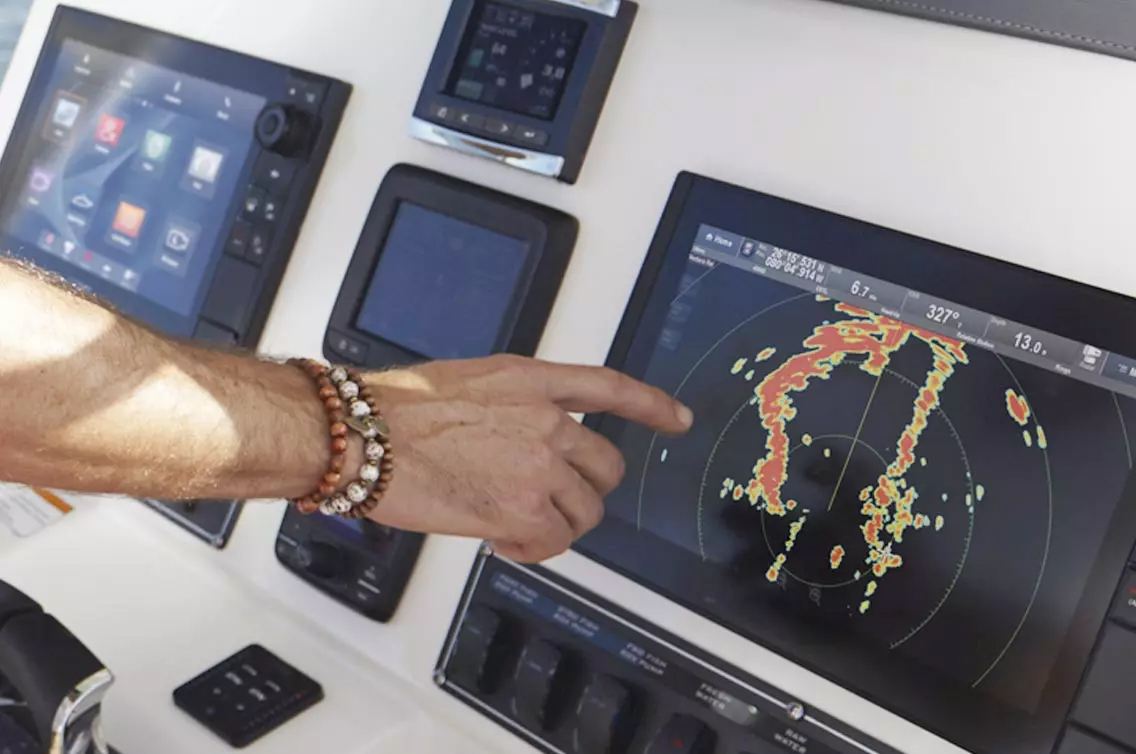- English
- Español
- Português
- русский
- Français
- 日本語
- Deutsch
- tiếng Việt
- Italiano
- Nederlands
- ภาษาไทย
- Polski
- 한국어
- Svenska
- magyar
- Malay
- বাংলা ভাষার
- Dansk
- Suomi
- हिन्दी
- Pilipino
- Türkçe
- Gaeilge
- العربية
- Indonesia
- Norsk
- تمل
- český
- ελληνικά
- український
- Javanese
- فارسی
- தமிழ்
- తెలుగు
- नेपाली
- Burmese
- български
- ລາວ
- Latine
- Қазақша
- Euskal
- Azərbaycan
- Slovenský jazyk
- Македонски
- Lietuvos
- Eesti Keel
- Română
- Slovenski
- मराठी
- Srpski језик
5 Tips for Understanding Boat Radar
2025-08-07
Here are a few key items you’ll need to keep in mind:
Range
Setting range is often where mistakes happen, because most people’s first impulse is to set it as far as possible. But if you have a 24-mile radar, even when you’re 24 or more miles from shore, you’ll rarely want to range it out that far.
Trying to represent such vast distances on a 12- or 16-inch LCD screen, all but the most massive targets become tiny dots that you might not ever see, and if there are a lot of targets the screen will just be a smattering of tiny dots.
It will be much, much easier to figure out what you’re looking at if you drop down the range to just a mile or two—which is the area you should be most concerned with anyway, since collision-avoidance is the number-one job radar does. And when you need to identify specific structures like inlets or piers, ranging in ever further makes them much easier to identify.
Those long-range views can be helpful when you’re trying to get a return from far-off land masses or track a thunderstorm. But otherwise, shorter ranges are usually much more helpful. When you need to gather information on all of the above, you may want to use a split-screen mode with different ranges displayed, or range in and out in turn.
Reading Range Rings
Understanding how to read range rings on your radar goes hand in hand with ranging in and ranging out your radar. All boat radar has rings displayed on the screen, which let you see at a glance approximately how far off a target is.
Some units will show the distance a ring indicates on-screen, but on some others you’ll have to do a bit of quick math in your head to figure out how far the rings are at different range settings.
At four miles of range with two rings displayed, for example, the first ring shows you where targets will be two miles away and the second indicates four miles.
Some radar also offers “VRM,” which stands for Variable Range Mark, and allows you to set a range mark to determine the distance of different targets.
The important thing is for you to be aware of the range rings and how your unit indicates target range, so you always know how far off those targets are.
Watching Target Bearings
While land and channel markers are static, boats are moving targets. On many marine radar you’ll have to watch a target for quite some time to ascertain its bearing (direction of travel). This can be important in reduced visibility, so you know if there will be the potential for collision danger.
Some more advanced radar have Doppler functionality, and will paint a trail behind the target which makes identifying direction of travel much, much easier.
There are also radar units which can color-code targets to indicate whether they’re getting closer to you or farther away from you.
And radar systems that have MARPA (Mini-Automatic Radar Plotting Aid) can display a target’s speed, bearing, closest point of approach, and the time to closest point of approach.
Situational Awareness
General situational awareness also plays a role in interpreting what you see on the radar screen, because different conditions can have different effects on what you’re looking at.
Sea state, for example, can cause your boat to pitch in the waves. As the bow goes up on a large wave, the radar’s transmission may temporarily pass right over a target—and it will disappear from your radar screen for a second or two at a time.
Another example is heavy rain, which can blanket a portion of your screen and hide the returns of other targets.
Whenever you’re captaining your boat you should have a high level of situational awareness and this goes for interpreting the radar, too.
Set-Up
What you see on-screen does depend to a degree on how your system was originally set up.
Many units can overlay the radar view over your chartplotter, which makes identifying land masses and markers far, far easier. But if your radar and chartplotter aren’t networked together or the unit’s settings aren’t appropriate, you won’t be able to enjoy that functionality. This is one of the reasons why a boat radar should really be set up by a pro. But even so, you’ll need to plan on spending some time familiarizing yourself with the unit and its settings.
Ready to Use Your Own Marine Radar System?
Boat radar can be an incredibly helpful tool, and there’s no doubt that using it has become far simpler than it once was. Even so, it takes most people a season or two to become accustomed to using radar. In this regard there’s no substitute for on-the-water experience.
Try using your radar as often as possible in broad daylight when there’s good visibility, so you become familiarized with what you see on the screen even as you can look around and see the targets that are being displayed with your own eyes. And before you know it, you’ll be using your boat radar like a pro.





